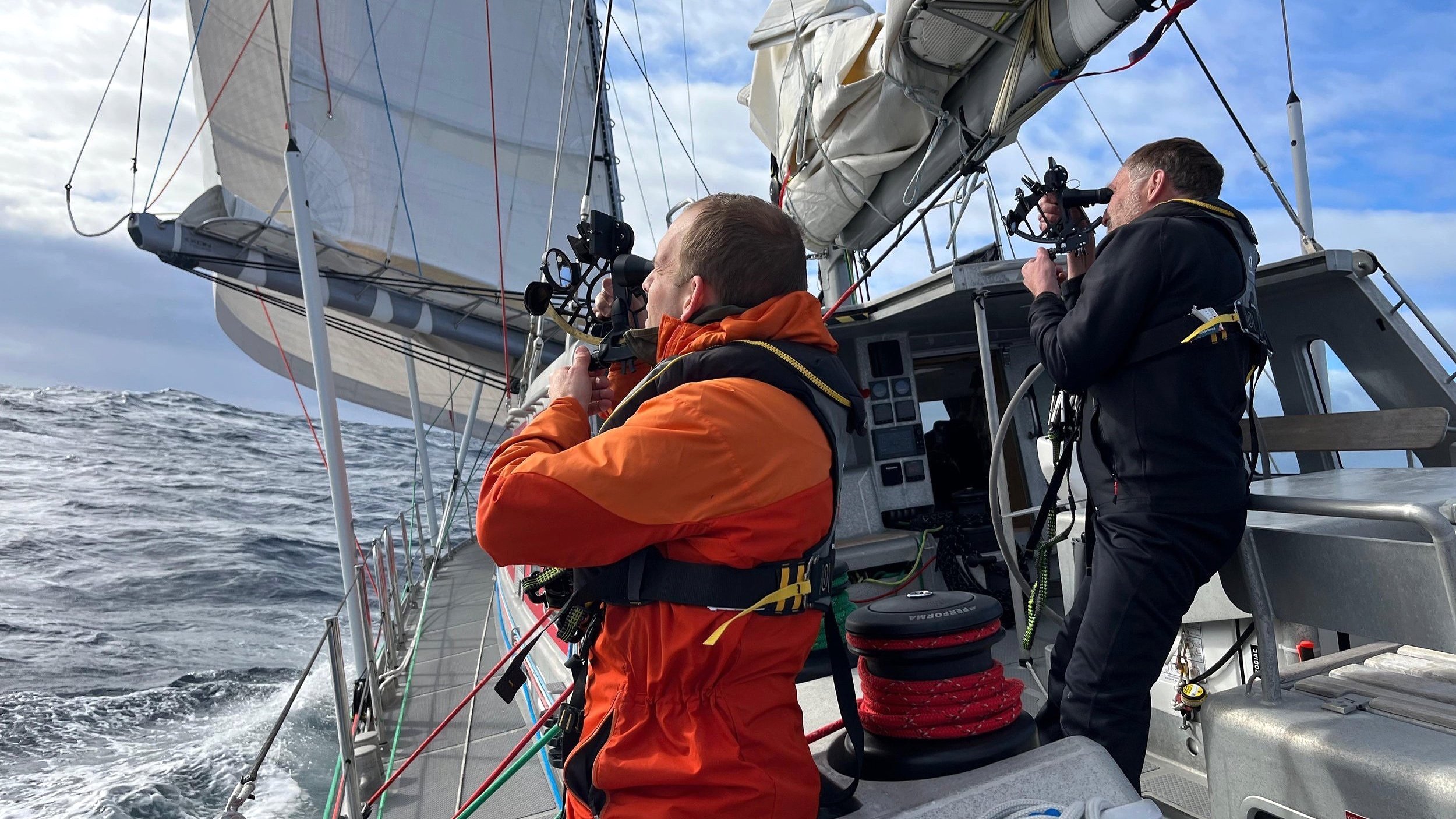RYA Course 24’. Celestial navigation.
The students are discovering that celestial navigation, and more widely sailing across an ocean, hones patience and observation like little else.
We are a week northeast of spectacular Chile, and have thoroughly enjoyed riding over the top of the Southern Ocean’s infamous lows, often with the headsails poled out like the wings of the albatross flying alongside. Smooth and steady.
Whilst the stronger westerlies of the South Atlantic have been gratefully received, the clouds that follow make finding the sun for navigation a waiting game. Some days they’ve been entirely too dense and we’ve had to rely on our hourly dead reckoning, formed from periodic checks of the compass and eyes on the log: we are always looking, always observing. Other days have allowed a few blue patches to peak through, and so out on deck you and your sextant must go.
Here, gather your patience. Sit, comfortable against the aft cockpit combing, having checked and corrected the sextant for errors. Watch in hand, notebook in pocket. The clouds look set to dissipate shortly: the sky is brightening, there’s a glow spreading over the waves. Check the shades, estimate your height of eye. A fellow crew mate comes to join you – these short bursts of sunlight are not to be wasted. Together, in the most companionable silence, you sit and wait. This will become your ritual.
Finally: a curve of the sun appears clearly enough for you to bring it down to the horizon. Down, down, down….. oh. The cloud has thickened once more, just before you could confidently get the sun’s lower limb to perfectly meet the sea. That was close. And so you pause, upper body swaying unconsciously to match the motion of Vinson in the swell, and wait again.
Watch the grey petrels flit and the sooty shearwaters glide. Notice the crystalline blue of the peak of a wave yet to break. Zip up your jacket against the chill.
In time, you will be rewarded with a clear streak of sky and a successful sight, giving you the sun’s altitude at that exact moment. From this measurement the students deduce a line of position relative to the sun’s geographic location. But the picture is not yet complete and a few more hours must pass, allowing the Earth to rotate 45° beneath the sun, before we can hope to truly find out where we are. We need another sight and a new line of position, towards which we can project our running fix and deduce that yes, X marks the spot: here we are.
Fortunately within the slow rhythm of ocean sailing, patience is not too hard to come by. Filling out the logbook, trimming the sails. sharing the load of cooking and cleaning, working through sight reduction table calculations, and so on: all can be done in due course. We are not rushed for time. We have many miles still to go.
Holly Vint
RYA Yachtmaster instructor










